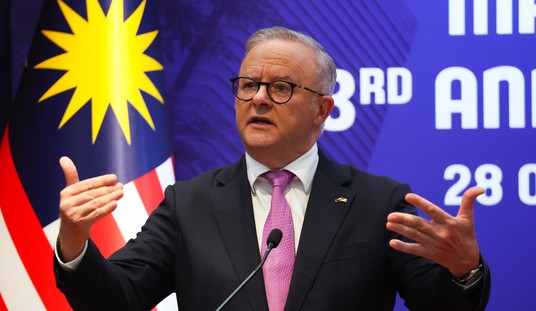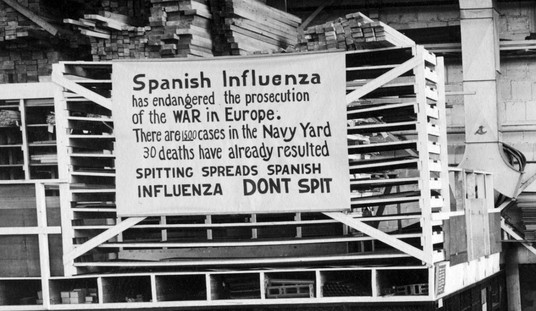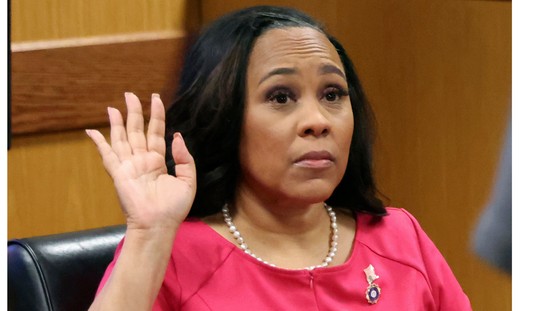Last night, conservatives groaned in unison when John McCain launched his “new” initiative to renegotiate the principal on home mortgages with owners approaching bankruptcy. Some called this a “second bailout”, and others predicted a massive hit on home values nationwide. In fact, this is nothing terribly new nor innovative, and it has as much chance of preserving home values as it does of eroding them.
First, lenders already have begun modifiying mortgages, including principal, and for very good reason. Foreclosures create massive losses for lenders, and they’re better off keeping owners in their homes and making payments — even if they take a 10-20% loss on the principal, on paper. The result will be lower profit than originally expected, but it’s still profit, and right now that looks a lot better than a potential 50-75% loss through foreclosure.
Now that Treasury will buy hundreds of billions in mortgage-backed securities, they in effect have become the lender. They will own the papers on these homes, and must act in the long-term best interest in managing them. That will mean negotiating with homeowners just as private lenders have already done, trying to keep people in their homes and preventing as many defaults as possible. Note that this comes as a result of the legislation Congress already passed, and not any new initiative. What McCain proposes is a specific strategy of managing the paper to prevent as many homes from foreclosure as possible. In the end, that strategy could result in considerable long-term profit rather than a taxpayer bath.
Renegotiating the principal on these loans will not directly impact home values, for two reasons. The action will keep these homes off the market, while home values depend on the sale prices of homes in the immediate vicinity. Second, home values are already dropping, thanks to the deflation of the housing bubble, excess inventory through overbuilding of new homes, and the anticipated addition of tens of thousands of foreclosures. Lenders are also not writing too many mortgages these days, making it impossible to buy or sell. If these foreclosures hit the market, it will not only drastically lower the prices in neighborhoods across America, it will eat into the ability of lenders to grant mortgages in the future — and they won’t have Fannie Mae and Freddie Mac backstopping them any longer.
This proposal doesn’t go any farther than Congress has already gone in injecting the government into private lending markets in order to undo their disastrous interventions over the past decade. It does offer a management strategy for the portfolios that Treasury will buy with that now-existing authority. The plan follows a fairly straightforward private-sector strategy in an attempt to keep as many people in their homes as possible. Without some sort of renegotiation on these loans, we’ll start seeing massive foreclosures and the rapid deflation of home values everywhere — which is what McCain said he wanted to prevent.
Update: Michelle strongly disagrees.
Update II: I’ve consulted an economist on this point, and he points out that the trouble with MBSs is that they consist of pieces of several loans. That’s what will make renegotiating terms through the private sector almost impossible — it will require hundreds of people to agree on each one. He thinks that McCain’s proposal will create a shortcut that will allow for quick renegotiation, which could keep many of these mortgages from going into default.
The McCain campaign confirmed with me that the $300 billion McCain referenced was part of the existing bailout, not an additional outlay. He wants it redirected into this effort. I’ve asked for a link, and I’ll add it when I get it.
Update III: Marc Ambinder has this report from a Team McCain conference call this morning:
On a conference call with reporters, McCain policy chief Douglas Holtz-Eakin spelled out how McCain would pay for his plan for the government to buy troubled mortgages and replace when with more favorable fixed-rate mortgages at minimal direct cost to the homeowners. The government could use some of the $700 billion authorized for the bailout and tap other accounts, although the campaign estimates that, owing to negative equity — the government can’t magically turn bad mortgages into good ones without taking a hit — would be $300 billion. The McCain team hopes that by buying mortgages directly, the government wouldn’t have to buy as many distressed assets from big banks, thus reducing the net cost. McCain claims this idea as his own, although the bailout/rescue bill already gives the government the authority to deal directly with homeowners, and Obama has suggested that the government do the same — although McCain’s certainly being more aggressive here.
As I said, the authority to do this was in the plan all along. It’s not an additional $300 billion — it’s using $300 billion of the $700 billion already authorized to hit more directly on mortgages rather than rescuing investors from their derivatives. It transfers at least some of the pain back to the people who speculated on mortgages, but in effect gives the derivatives more value through the support of the mortgages on which they’re based.
Update IV: The Hope for Homeowners program, within the plan passed by Congress a week ago, already has this mechanism within it:
HOPE for Homeowners (H4H) is a program designed to assist borrowers at risk of default or foreclosure in refinancing to an affordable 30-year fixed rate FHA loan. The program is effective October 1, 2008 and will conclude on September 30, 2011. …
The loan amount may not exceed a nationwide maximum of $550,440.
The new mortgage will be no more than 90% of the new appraised value including any financed UFMIP with the lender essentially writing down the current mortgage to that amount.
Upfront MIP is 3% and the monthly MIP is 1.5%
The holders of existing mortgage liens must waive all prepayment penalties and late payment fees.
The existing first mortgage must accept the proceeds of the H4H loan as full settlement of all outstanding indebtedness.
Existing subordinate lenders must release their outstanding mortgage liens.
Update V: King Banaian looks at the McCain proposal:
There’s a glut of homes on the market. A glut is reduced either by decreasing supply or increasing demand. Lee Ohanian tries to sell an increased in skilled immigrants as a way to increase demand. The McCain Resurgence Plan, at its base, tries to reduce supply by not forcing the sale of homes through foreclosures. It might be, might be, cheaper to throw a few dollars into homes directly than to support the banks through the purchase of MBSs. …
The relief of negative equity means that the banks would receive from the government the difference between the principal on the original mortgage and the mortgage “at terms manageable for the homeowner.” I still need some flesh on that. I would want to know if the 31% payment-to-income ratio is the definition of manageable. I’d want to know if the government can be certain the initial purchase price on the home was not set in order to qualify someone for a shady mortgage. Those details aren’t there, and don’t look in Marty Feldstein’s pitch from last Friday (which is not exactly the same proposal anyway, but a close cousin.)
Be sure to read all of King’s post.








Join the conversation as a VIP Member